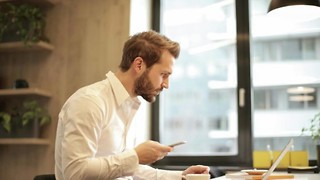“It’s about the balance between curiosity and drive”
The designer Sir Jony Ive is the most recent recipient of the Hawking Fellowship. His speech, which lambasted problem-oriented approaches, gave a unique insight into the creative process

The Hawking Fellowship, while a relatively new honour, is already starting to boast a remarkably strong list of recipients. Set up by the Cambridge Union Society last year, the inaugural award went to Professor Hawking himself; following his passing, it has since been renamed in his honour. The Fellowship is awarded annually by the Committee to a recipient who is both distinguished in STEM (science, technology, engineering and mathematics) fields and who has, in some way, influenced the progress of social discourse. In this second year of the Fellowship, it has been awarded to Sir Jony Ive, the London-born industrial designer who has headed Apple’s design team since 1992; over the years he has overseen such familiar projects as those of the overall looks of the iPhone, iPad and MacBook.
Ive opened his speech at the Union on Monday with a few remarks about the “surprise and sense of honour” he felt after receiving the award. A keen reader of Hawking’s works, he recalled that through them he “glimpse[d] the way that [Hawking] saw things”, especially the physicist’s strong concerns over the collective future of humanity. With these themes in mind, he launched into the speech proper, which he titled ‘The Creative Process in a Team Setting’. In the potted life story with which he started, he emphasised the idea of industrial designers as the creators of tools, often springing from ideas and concepts rather than worldly absolutes, which then both reflect and shape the very fabric of society and culture.
"this totally problem-oriented approach can definitely be damaging"
He gives as an example a 2002 project he directed which centred on the development of multitouch technology. The broad idea would that it would end up as natural and intuitive, and through the course of the design process the interface started to take on a remarkably familiar form – a series of specific, individual app interfaces with which the user interacts, each of which is designed with the purpose of the app in mind, rather than each having to submit to the same form. “The starting idea wasn’t a direct response to any particular problem,” Ive explains; “indeed, the technology took years to catch up with ideas like this one”. However, after a lengthy process of customer-facing development, including a major focus on user opinions after interacting with a tangible product, it eventually reached its prime. That technology rose from quite humble beginnings into the massively influential software superstructure we call the App Store.
For Ive, this is just a single example of a unifying theme in his creative experience. “Problems are measurable,” he says, “they are easy to talk about, which is exactly why we tend to focus on them. But this totally problem-oriented approach can definitely be damaging.” He cites his experience of working in large design teams, in which he thinks it’s much harder to remain genuinely curious, since outside ideas quickly end up feeling somehow uncomfortable; “there’s a tendency for teams to gravitate back towards what is known rather than to what is unknown”. These teams would do well, in his opinion, to recentre their attitudes towards shared discovery and learning. “You have to suspend your disbelief,” he declares. With a characteristic turn of phrase, he explains that the creative process is “fabulously terrifying”.
What, then, is the key to his colossal success in his creative field? “It’s about the balance between curiosity and drive, which is required to continually make real progress,” he claims. There are lots of occasions on which the smart move is to deeply explore issues, question received wisdom, and cast about for revolutionary ideas, he says. But in the real world, there are also plenty of times when one needs a strong determination and resolve to focus on a single problem at hand in order to get through it, often when working towards deadlines. “It’s very demanding to have to switch between these two mindsets when the need arises,” he admits, “but it’s what needs to be done to bring great products to market.”
 News / Cambridge academics stand out in King’s 2026 Honours List2 January 2026
News / Cambridge academics stand out in King’s 2026 Honours List2 January 2026 Interviews / You don’t need to peak at Cambridge, says Robin Harding31 December 2025
Interviews / You don’t need to peak at Cambridge, says Robin Harding31 December 2025 Comment / What happened to men at Cambridge?31 December 2025
Comment / What happened to men at Cambridge?31 December 2025 News / Varsity’s biggest stories of 202531 December 2025
News / Varsity’s biggest stories of 202531 December 2025 Features / “It’s a momentary expression of rage”: reforming democracy from Cambridge4 January 2026
Features / “It’s a momentary expression of rage”: reforming democracy from Cambridge4 January 2026











